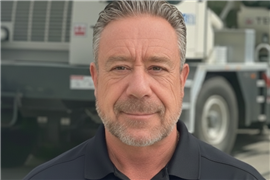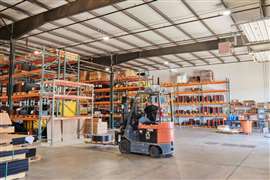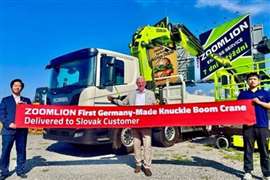The next asbestos?
24 April 2008
Welding fume litigation is on the rise in the US and more than 3,600 court cases are pending. US welding rod manufacturers appear to be in the crosshairs of an overtly aggressive plaintiff's bar with the barrage of lawsuits since 2003 reminiscent of asbestos lawsuits.
The crux of the plaintiff's case against welding rod manufactures stems from readily available medical evidence in the form of scientific studies that document that:
1 manganese is toxic to the central nervous system in levels that exceed the trace amounts normally found in the human body
2 toxicity of manganese can cause progressive, disabling neurological damage known as Parkinsonism
3 welders are susceptible to Parkinsonism because of their inhalation of welding rod fumes which contain manganese particles.
Just as the manufacturers of welding rods are bound by law to make its consumers aware of the dangers involved in the use of their products, it can be argued that it is the contractors'responsibility to provide a safe working environment for its employees. It is in this gray area that experts believe the plaintiff 'sbar may focus its attention on in the future.
Important safeguards
Inhalation is the primary method by which a welder is exposed to manganese particulates in the welding plume, the area enveloping the welder containing noxious gases and aerosolizedmetal particulates. Airbornecontaminants, including manganese, are released when the tip of the welding rod is heated, therefore, it is imperative that the welding environment beadequately ventilated. “Adequately ventilated,” in this context, is defined as sufficient ventilation, that is, ventilated to the point that hazardous contaminants are below the allowable levels specified by OSHA. The current OSHA recommended Permissible Exposure Limit (PEL) of manganese is 0.2 milligrams per cubic liter of air total fume concentration in the breathing zone of the welder or others in the area during all types of welding over an eight-hour work day.
Adequate ventilation is defined as either through natural ventilation, general mechanical ventilation or local exhaust ventilation. Ventilation, along with the OSHA recommended“personal protection equipment”- which includes but is not limited to safety spectacles, goggles, welding caps, face shields, welding helmets, ear muffs, earplugs, fire resistant gloves, overalls, coveralls, torso and waist aprons, spats, leggings, shoes and perhaps, most importantly, respirators -can all be key factors in proving the contractor did all it could to provide a safe work environment. Atmosphere-supplying and air purifying respirators provide the much needed protection against the particulates in the air that are causing these recent concerns.
Warning signs are another effective way of reducing potential exposures. Manufacturers put warnings on their products cautioning users of the potential dangers of welding, and it only makes sense for contractors to do the same. Signs posted in areas where welding activities are performed should warn of the dangers of welding and encourage welders to make sure adequate ventilation is achieved and the various forms of personal protection equipment are worn.
Addressing safety in an aggressive fashion at the contractor level is key to reducing exposure to lawsuits.
The insurance perspective
With the industry buzz labeling recent lawsuits as “the next asbestos,” the insurance industry is keeping a close watch on the rise of welding rod litigation. Insurers are using some of the hard lessons learned in “asbestos,” and applying them to policy holder claims for coverage. It has been reported that some insurers have begun to exclude future coverage for welding rod related liability, just as they did with asbestos-related liability in the mid-1980s.
Although it may, at times, seem like a David and Goliath match up, companies facing welding rod liability can take steps to protect themselves. Richard Fields, an attorney for the Resolution Group of Dickstein, Shapiro, Morin & Oshinsky LLP in Washington, D.C. takes this approach. “Companies facing welding rod liability can take many steps to minimize the impact of welding rod liability. They should implement a concerted defense strategy aimed at defeating welding rod-based claims before they are allowed to develop fully into 'the next asbestos.' They should also preserve their assets against such potential future claims to the fullest extent possible through corporate reorganization strategies.”
Fields continues: “Companies should also take steps to preserve their valuable insurance coverage. If insurance companies adopt the strategy that they used in asbestos, they will seek to escape, limit, or at least delay their coverage obligations to their policyholders through litigation. Potential welding rod defendants should cooperate to form a concerted response to the insurance industry's effort to evade coverage.”
In a 2004 article Fields wrote for the online site Welding & Gases Today Online, he breaks down the potential threat to the insurance industry this litigation causes, “Given the threat that welding rod liability poses to insurance companies' balance sheets, insurers may declaratory judgment actions against their policyholders early in the development of the litigation. Insurance companies will select friendly jurisdictions and focus on policyholders least able to defend themselves from insurers' assaults on coverage. By filing these cases, insurance companies will attempt to prevail on key legal issues that could limit their obligations. One insurance company already adopted this strategy by suing on of its policy holders in Maryland. That insurer claims that pollution exclusion relieves its insurance obligations for weldrod liability. Other insurers have successfully avoided policyholder's claims for insurance coverages by asserting the pollution exclusion. In addition to freeing these companies from their insurance responsibilities, these decisions also created law favorable to the insurance companies on a key coverage issue.”
The insurance industry sees the tsunami coming, and it is going to do everything it can not to end up like Indonesia. Policyholders who think they are at risk because of welding rod claims need to dig into the companies' historic insurance policies and determine which ones may be affected. They should collect and preserve whatever available documents they have that establish the existence and terms of those policies and try to identify each instance in which they have been named as an additional insured under another company's policy
Policyholders who think they may be at risk should notify their may be at risk should notify their insurers as soon as is realistically practical. Standard form commercial general liability policies reserve the right to deny coverage for failure to give proper notice and failure to give timely notice on claims made policies bars insurance coverage all together. The issue of notifying your insurance carrier is convoluted and burdened with complexity. Injuries from welding may span many years and more than one type of policy Companies should carefully consult insurance coverage counsel to develop a strategy on how and in what manner to report these claims. Timing is critical.
Summary
Welding rod litigation, at first glance, seems time consuming, expensive, complex and laborious. To a certain extent it is but a closer look reveals that it is extremely simple: all it takes is time and money. The fact that plaintiff's counsel may lack advance litigation experience, or knowledge about welding, or metallurgy, or the existence of manganese in welding rod fumes, or the casual correlation between it and Parkinson's disease, does not bar plaintiff's counsel from litigating such cases. It's a “learnas you go” process.
Welding rod liability shares many of the same factors that drive asbestos litigation, even today, and these factors alone seem enough to send the message that plaintiff's bar has no intentions of backing down. There is an enormous pool of potential plaintiffs, allegations of serious injuries, a significant financial investment by plaintiff's counsel in an effort to develop a new category of mass tort litigation and an industry that may not be taking these threats as seriously as it should.
As an industry, we need to take the necessary steps to insulate ourselves from this fast approaching hurricane of litigation. We can all agree that companies choked on the“asbestos cloud,” let's not makethe same mistake with the“welding plume.”
STAY CONNECTED


Receive the information you need when you need it through our world-leading magazines, newsletters and daily briefings.
CONNECT WITH THE TEAM











